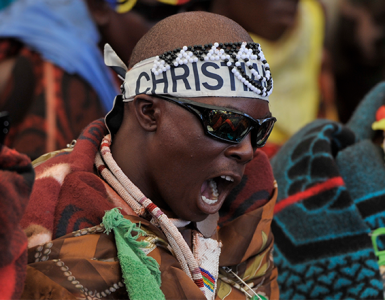PROSPECTS: The government was currently responsible for nearly 6000 abandoned mines including 379 coal mines
By Monk Nkomo
The nearly 400 closed coal mines which have since been invaded by zama zamas, could have hidden potential of being transformed into valuable platforms to create jobs in South Africa where the current unemployment rate now stood at a staggering 8,2 million people in the first quarter of this year.

This is according to Nicola Wills, a PhD candidate in Economics at the University of Cape Town (UCT).
In an article published in Econ3X3, Wills said the government was currently responsible for nearly 6 000 abandoned mines, including 379 coal sites. These sites posed serious risks including acid mine drainage, water pollution, land degradation , greenhouse gas emissions due to spontaneous combustion and safety concerns.
‘’ Deficient rehabilitation and restoration of closed and abandoned coal mines presents risks but also opportunities to create jobs’’, Wills said.
South Africa’s abandoned coal mines – often regarded as environmental hazards – could have hidden potential to promote sustainable jobs, economic diversity and community resilience in the context of the Just Energy Transition (JET).
Wills said as the country moved away from coal toward cleaner energy sources, thousands of workers and their families faced economic uncertainty. In 2019, the coal sector employed up to 108 000 workers, with nearly 66 000 of them based in Mpumalanga, a province where about 46 000 households depended on coal- related income.
‘’Half of the country’s coal-fired power plants are expected to shut down by 2040, making it crucial to find new income in regions that used to depend on coal. The closure of coal mines must not mean the collapse of local economies. If we repurpose these sites strategically, we can transform them into platforms for jobs and development.”
While information on the recent closure of established coal mines was available, Wills said this was not the case for abandoned mines and the available data was outdated and provided no specific locations.
“My analysis highlights sectors that support high-employment and low-carbon growth. Agriculture, environmental monitoring and other services and industries linked to renewable energy exhibit strong employment benefits. These align with the Mpumalanga Green Economy Development Plan which aims to transition the province’s economy toward renewable energy (including biomass), sustainable agriculture, and tourism by 2030.”
Wills stated that mining contamination in Mpumalanga had been a major challenge for crop cultivation, but innovative rehabilitation techniques were proving that land could be restored for sustainable agriculture – an outcome once thought impossible.
The Mafube water reuse project, she added, produced maize yields nearly twice that of dryland crops, while the Wonderfontein wheat project used treated mine water to generate higher outputs than virgin soil, meeting all safety standards. Mpumalanga had also partnered with Coaltech and the Mpumalanga Green Cluster Agency to repurpose mining land for biofuels, industrial hemp and renewable energy.
‘’The government has successfully rehabilitated about 55 abandoned mines, prioritising those that contained asbestos and emphasising safety while working to restore the land to its natural state. Legislation mandates rehabilitated land to resemble its condition before mining’’.
Wills however, suggested that a more effective approach would involve making the land economically viable for local communities. The ongoing greenhouse gas emissions associated with these sites were not included in legislation. Research suggested that abandoned mine methane continued to be released into the atmosphere decades after mine closure. This was important to consider in the context of commitments to the Paris Climate Agreement.
According to Wills, many communities affected by mine closures lacked skills and opportunities to adapt to an energy transition. “Workers in these mines are mostly semi-skilled, with around 40% in craft and related trades and 35% in plant and machine operations. Reskilling can assist in the transition from mining work to mine rehabilitation efforts or even farming, but community buy-in is also critical.”
The government had allocated R181.9 million for mine rehabilitation in the 2024/25 fiscal year. However, coal mines were not a priority and obtaining mining closure certificates and accessing rehabilitation funds from the government could be very challenging, Wills added. Rehabilitation and restoration projects qualified for funding under the JET Investment Programme.
“A just transition in South Africa’s coal-mining communities hinges on pro- active policy interventions, strategic financing mechanisms and collaboration between government, industry and local communities. The challenge is to turn mining’s destructive environmental past into an economic asset.”
MIRROR Briefs
BID TO HALT INDABA DISMISSED
The Pretoria High Court has dismissed the Labour Party’s urgent application to interdict the launch of the National Dialogue, which is set to commence on August 15, 2025. On June 10, President Cyril Ramaphosa announced what has been termed “the National Convention”, the first of which was scheduled for August and was expected to set the agenda for the National Dialogue.
The Labour Party sought an urgent interim interdict to halt the National Dialogue, arguing that the initiative was unlawful and unconstitutional.
At the heart of its objections were the costs associated with this. It also said the National Dialogue was not a genuine democratic exercise, but a costly and dangerous duplication of the national legislature.
Advocate Margaretha Enbelbrecht SC, argued that the National Dialogue Preparatory Committee estimated that the initiative would cost over R700 million, according to an announcement dated June 12.
According to the respondents – the State – a final budget would only be developed following engagements with the National Treasury and other potential partners.
Judge AJ de Vos ruled that the Labour Party’s urgent application lacked merit, with no proof of unauthorised expenditure or irreparable harm. The Labour Party had also not proven that the balance of convenience favoured the granting of an interim interdict. – Lehlohonolo Lehana
SASSA BENEFICIARIES WARNED
The South African Social Security Agency (SASSA) has warned that failure to comply with the current review process may result in the suspension and possible permanent lapsing of their grants.
“Continued non-compliance may lead to the permanent lapsing of their grants. Beneficiaries are advised that SASSA is also empowered by the Act to recoup any money that would have been paid to the beneficiary incorrectly. “This means that, should we find out that you have been receiving social grants that you were not eligible to receive, SASSA will institute a debt recovery process where you will have to pay back the money,” SASSA CEO, Themba Matlou warned.
The review process had already seen over 140 000 SMS notifications sent to beneficiaries selected for review. Matlou noted that the non-responsiveness could be an indication that some beneficiaries may have changed their contact details but failed to inform them.
“SASSA has in previous years noticed that many beneficiaries do not update their contact details with SASSA and consequently do not receive the notices for them to come in to conduct a review’’. Beneficiaries who had not received their payment or were uncertain about their payment status should contact SASSA through the toll-free number 0800 60 10 11 or visit www.sassa.gov.za. – SAnews
MOM DENIES MURDER RAP
The bail application by 31 year old, Tiffany Nicole Meek, who is accused of murdering her son, will continue in the Roodepoort Magistrates’ Court in Johannesburg on Monday, July 21, 2025.
Meek appeared in court on Friday where she said she would plead not guilty to allegations that she murdered her 11-year-old son, Jayden-Lee Meek. She also told the court that she had an alibi.
“I never abused my child,” Meek declared through her attorney, challenging claims that she was responsible for her son’s death.
The prosecution outlined four counts against Meek which included murder, crimen injuria and defeating the ends of justice. The State alleges that Meek struck her son with a blunt object. Forensic experts determined that Jayden-Lee was killed in his home. His body was found the following morning lying on the staircase near his home.
The accused ,through her attorney, Noven Naidoo, pleaded not guilty to all charges and strongly denied suggestions that she was an abusive mother.
In her bail affidavit, read to the court, she expressed bewilderment at being accused of her son’s murder. – Lehlohonolo Lehana.
DONALD TRUMP IS SICK
The U.S. President, Donald Trump, was experiencing swelling in his lower legs and bruising on his right hand, after photographs emerged of him with swollen ankles and makeup covering the afflicted part of his hand, according to the White House. White House spokeswoman Karoline Leavitt, reading a letter from Trump’s doctor at a press briefing, said both ailments were benign. His leg swelling was from a “common” vein condition and his hand was bruised from shaking so many hands, she told reporters.
The disclosure sought to put to rest a raft of internet rumours that the 79-year-old Trump might be suffering from a serious ailment based on the photographic evidence.
After Leavitt’s briefing, the White House released the letter from a U.S. Navy officer who was Trump’s physician, Sean Barbabella. It said Trump underwent a suite of tests about the issues.
Barbabella said an ultrasound on the President’s legs “revealed chronic venous insufficiency, a benign and common condition, particularly in individuals over the age of 70.” There was no evidence Trump had contracted deep vein thrombosis or arterial disease. Additional exams identified no signs of heart failure, kidney impairment or a systemic illness, Barbabella said.
Trump also had bruising on the back of his right hand. Barbabella described this as “consistent with minor soft tissue irritation from frequent handshaking and the use of aspirin, which is taken as part of a standard cardiovascular prevention regimen.” – Fullview






























